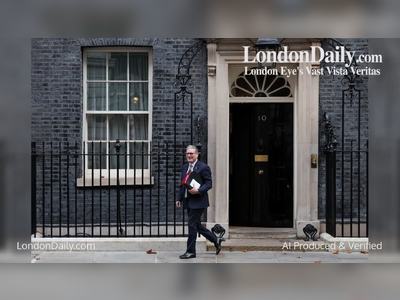UK Growth Nearly Stalls at 0.1% in Q3 as Cyberattack Halts Car Production
Jaguar Land Rover hack drags September output and heightens pressure ahead of November budget
The United Kingdom’s economy expanded by just 0.1 per cent in the third quarter of 2025, official data show, as a major cyberattack on Jaguar Land Rover (JLR) disrupted manufacturing and dented output.
The growth rate, down from 0.3 per cent in the previous quarter and short of the 0.2 per cent expected by analysts, underscores a fragile economic backdrop ahead of the government’s budget next week.
The attack on JLR’s UK operations — which forced the carmaker and its suppliers to pause production from late August through September — is estimated to have cut about 0.06 percentage points from Q3 growth and removed 0.17 percentage points of growth in September alone.
Monthly output in September shrank by 0.1 per cent, with manufacturing suffering a 28.6 per cent decline in car and trailer production, the largest drop since April 2020.
Beyond the manufacturing shock, slower growth was visible across services, which rose only 0.2 per cent in the quarter, and construction, which expanded just 0.1 per cent.
Business investment fell by 0.3 per cent, while unemployment climbed to 5 per cent, the highest in four years.
Together, the data have rattled markets and raised expectations that the Bank of England may cut interest rates as soon as December.
Finance Minister Rachel Reeves acknowledged the cyberattack’s impact and warned the budget will need to tackle the fiscal gap through tougher measures.
The weak economic performance places renewed pressure on the government to balance tax rises and growth-friendly measures, especially given a longstanding target of faster growth after years of under-performance compared with pre-2008 levels.
The shock to the auto sector highlights how a single operational disruption can ripple through the economy and influence national figures.
The economy’s reliance on key industrial players and tightly-linked supply chains has made growth more vulnerable to idiosyncratic events, complicating the task of building a more resilient recovery.
With the budget scheduled for 26 November, the government must now contend with the risk that tax increases or austerity could further dampen growth momentum.
Markets will also be watching how the Bank of England responds, as the data confirm the UK’s growth trajectory remains subdued and exposed to external and domestic shocks alike.
The growth rate, down from 0.3 per cent in the previous quarter and short of the 0.2 per cent expected by analysts, underscores a fragile economic backdrop ahead of the government’s budget next week.
The attack on JLR’s UK operations — which forced the carmaker and its suppliers to pause production from late August through September — is estimated to have cut about 0.06 percentage points from Q3 growth and removed 0.17 percentage points of growth in September alone.
Monthly output in September shrank by 0.1 per cent, with manufacturing suffering a 28.6 per cent decline in car and trailer production, the largest drop since April 2020.
Beyond the manufacturing shock, slower growth was visible across services, which rose only 0.2 per cent in the quarter, and construction, which expanded just 0.1 per cent.
Business investment fell by 0.3 per cent, while unemployment climbed to 5 per cent, the highest in four years.
Together, the data have rattled markets and raised expectations that the Bank of England may cut interest rates as soon as December.
Finance Minister Rachel Reeves acknowledged the cyberattack’s impact and warned the budget will need to tackle the fiscal gap through tougher measures.
The weak economic performance places renewed pressure on the government to balance tax rises and growth-friendly measures, especially given a longstanding target of faster growth after years of under-performance compared with pre-2008 levels.
The shock to the auto sector highlights how a single operational disruption can ripple through the economy and influence national figures.
The economy’s reliance on key industrial players and tightly-linked supply chains has made growth more vulnerable to idiosyncratic events, complicating the task of building a more resilient recovery.
With the budget scheduled for 26 November, the government must now contend with the risk that tax increases or austerity could further dampen growth momentum.
Markets will also be watching how the Bank of England responds, as the data confirm the UK’s growth trajectory remains subdued and exposed to external and domestic shocks alike.










